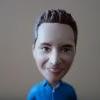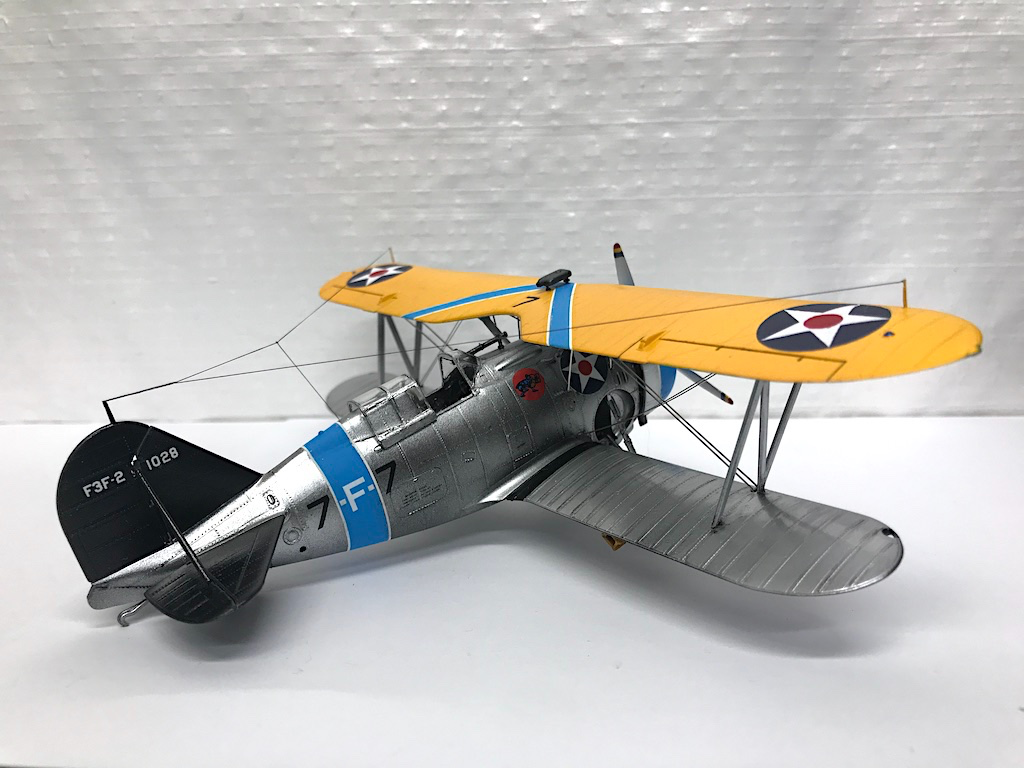-
Posts
4,470 -
Joined
-
Last visited
Content Type
Profiles
Forums
Gallery
Events
Everything posted by Landlubber Mike
-
Thanks Alan! Hoping it goes well! Thanks EG! It would have been fun to try and model that scene - flat tire and all - but I have a lot of aftermarket to open the plane up so I probably will just model it undergoing maintenance or something. There are some other cool pics out there of US and UK soldiers coming across fields of wrecked Hs 129s in Tunisia. That would be another fun diorama to try out.
-
For the "Sandbox" group build on the LSM sister site, I'll be building (and hopefully finishing) the Hobby 2000 Hs 129B-2. I've got probably every piece of aftermarket for this kit so I'm planning on showing this bird fully opened up. I hadn't heard of Omask before, but when researching, I found they offered a lot of great AM for this kit, including a 3D printed Mk 101 cannon (which I couldn't find elsewhere in this scale) and stencil masks for the two color schemes offered in the kit. I'm planning on building the one on the cover: I also managed to find some scale camels to add to the diorama. Should be a fun ride!
-
Finally finished! This thing has been fun, but a bit nerve wracking. There are so many PE and other fragile detail pieces, that I kept breaking things off. I figured out a way to hold the model, but one time I accidentally held it a little too firm a popped one of the windows into the fuselage - let's just say, I said a few not so nice words 🤬 Somehow, after shaking the fuselage for a few minutes, the window popped back down into the slot. It took a while, but I managed to get it glued back in. It's not perfect, but better than terminating the build. Thanks to everyone for your support and help!
-
Productive [late] night yesterday. Got the decals on the underside of the wing, fully assembled the plane minus the antennae on the top of the canopy (which is too fragile to really install at this stage), and sprayed the fuselage and top of the wing with a gloss coat. Almost to the end finally! Just need to add decals, a little weathering/shading/highlighting, and then the rigging. Fingers crossed the tape comes off the windows ok. This kit fights you all the way, but it's looking like a nice model in the end. The struts in particular where a pain the posterior to try and fit and glue. Thanks for looking in!
-
Thanks Alan! I did my F3Fs using Vallejo Metal Colors - they came out ok. Paints were really easy to use, but another time or two I got what looks like pooling spots where the paint doesn't seem to adhere very well (looked almost like a smear). It could have been I was spraying too much/too close/too much pressure in that particular spot, but I didn't seem to have problems with the rest of what I painted. It sucked having to strip the paint and try again. The Mr. Color paint had none of those issues whatsoever. Not as easy to use as Vallejo, but when you have to paint a big area in metal, because the metal paints already magnify any imperfections, I'd rather avoid compounding issues.
-
I've made some good progress the past couple of days. I managed to finish painting all the parts, including touch ups just a bit ago, and have started adding a gloss coat for decals and weathering. Lots of Tamiya masking tape was used! The kit gives you decals for the upper black stripes and anti-glare at the nose, but I decided to paint them instead since the underside of the fuselage and the floats is also in black, and I wanted to avoid potential color mismatches. Paints used: Primer: Mr. Surfacer 1200 Red: Tamiya Flat Red XF7 with a bit of brown mixed in to tone down the bright red look. Yellow: Decanted Tamiya Camel Yellow TS 34 Green: Vallejo Game Air Sick Green with some Vallejo Model Air Green mixed in. The kit shows a very emerald looking green, but I wanted mine toned down a bit (similar to how I used a more toned down red color). Aluminum: Mr. Color Super Metallic 2 (SM 201) - Super Fine Silver 2 (for undercoat, I used Mr. Color GX 2 Ueno Black gloss). I really loved how this paint sprayed! I like Vallejo's Metal Color range, but I've had issues at times with getting a smooth coat and sometimes it doesn't adhere very well. I'll probably keep using Vallejo for smaller items like engines and details (and I used it for touch ups on this model), but this Mr. Color line might be my new go-to. Black: Tamiya Nato Black XF 69 Thanks for looking in!
-
Great job Peter! Really well done!
- 55 replies
-
- miniature
- Brandenburg State Yacht
-
(and 1 more)
Tagged with:
About us
Modelshipworld - Advancing Ship Modeling through Research
SSL Secured
Your security is important for us so this Website is SSL-Secured
NRG Mailing Address
Nautical Research Guild
237 South Lincoln Street
Westmont IL, 60559-1917
Model Ship World ® and the MSW logo are Registered Trademarks, and belong to the Nautical Research Guild (United States Patent and Trademark Office: No. 6,929,264 & No. 6,929,274, registered Dec. 20, 2022)
Helpful Links
About the NRG
If you enjoy building ship models that are historically accurate as well as beautiful, then The Nautical Research Guild (NRG) is just right for you.
The Guild is a non-profit educational organization whose mission is to “Advance Ship Modeling Through Research”. We provide support to our members in their efforts to raise the quality of their model ships.
The Nautical Research Guild has published our world-renowned quarterly magazine, The Nautical Research Journal, since 1955. The pages of the Journal are full of articles by accomplished ship modelers who show you how they create those exquisite details on their models, and by maritime historians who show you the correct details to build. The Journal is available in both print and digital editions. Go to the NRG web site (www.thenrg.org) to download a complimentary digital copy of the Journal. The NRG also publishes plan sets, books and compilations of back issues of the Journal and the former Ships in Scale and Model Ship Builder magazines.






